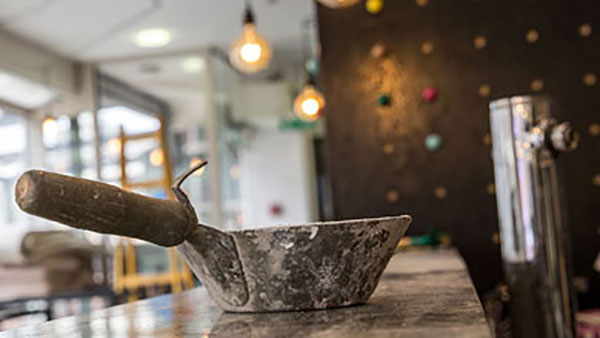Top 5 Foodservice Trends of 2017

Here are five trends we see making an impact in 2017
Staying true to your brand is a big part of what’s most important in foodservice. It’s critical to be consistent in your offerings, in your actions and in your commitment to your values and mission. However, focusing on your brand doesn’t mean being closed off to movements and changes in your market. So, as you continue to do what you do well, be sure to keep listening to your customers for shifts in the industry and emerging trends.
We’ve been listening and here are five trends we see making an impact in 2017.
1. A Taste of Technology
These days, a customer’s experience with restaurants and coffee shops happens long before they step foot through the door. With a variety of technological touch points, eateries have the opportunity to begin customer service from the very first click.
Menus are searched online, making mobile-friendly websites a necessity. Mobile ordering and payment is becoming an expectation with the likes of Google Wallet and Apple Pay. Tableside tablets and digital menus are gaining approval from families on the go. Think of the seamless technological interaction Starbucks has created for their customers, whether it’s the free WiFi and lots of power outlets for dine-in patrons or the smartphone app that allows their commuting drive-thru customers in a rush to order and pay before arriving at the store.
It’s important to understand how your customers are interacting with your brand today, so you can determine how technology can bring you closer together in the long run.
2. The Beauty of Remodeling
Is remodeling really a trend? A 2016 report from the National Restaurant Association said that 64% of operators made a capital expenditure for equipment, expansion or remodeling, with 59% saying they had plans to do so in the coming months.
Customers absolutely interact and respond to the atmosphere and environment in which they enjoy their food and beverages. As consumers, we all look for ways to connect to brands – whether it’s an aesthetic association or one that speaks to a company’s mission. Remodeling can more closely connect your customers to your brand.
As you review the benefits of remodeling – remember to reflect on your brand, your customer base and your budget. You can even find impactful gestures that don’t impact your wallet. Something as low-cost as hosting a local artist can refresh not only the interior, but the community-minded personality of your business.
3. The Fine Print
Americans’ eating habits have shifted and when eating out, customers are starting to demand healthy options on their favorite menus. With an increased desire for personal health and environmental sustainability, consumers are minding ingredients and how they are sourced.
The loudest voices are calling for transparency not only on retail labels, but on menus. Larger chain operations are gearing up to comply with the FDA’s new Menu Labeling rule by next summer. Regardless of size, more and more venues have customers who want to see ingredient lists, nutritional information and sourcing.
Before you tell all, listen to your customers. Why not begin by making them aware of when – and why – you’re using local or mindfully sourced meat, produce and other products? They will know that you care and likely support you.
4. Eco-Friendly Meets Budget-Friendly
You can hardly turn around without someone asking you about your sustainable service products. Purchasing eco-friendly products used to mean big bucks. But now, more than ever, there are budget-conscious options.
Recyclable, compostable and now, biodegradable to-go products are popular with patrons who want to leave a smaller environmental footprint. Vio® biodegradable* EPS foam is the most budget-friendly of all the eco-friendly cup options. Yes, you could say 2017 is the year for to-go products that are easy on the environment, easy on you – and good to go.
5. Plating for Broader Palates
Not only are consumers looking for healthier menu options, they are requesting more authentic global flavors. As communities continue to diversify and individuals have more access to a variety of cuisine through travel and their own grocery stores, palates are broadening.
Trends like the millennial love affair with Sriracha have broadened flavor profiles and introduced diners to other interesting options like Korean gochujang, a fermented chili paste, or the Indonesian hot sauce sambal oelek. What once seemed “off-the-charts” and “out there” have become flavor staples.
As the U.S. continues to celebrate its diverse cultures, keep a lookout for opportunities to wow palates with exciting and interesting flavors on your menu.



